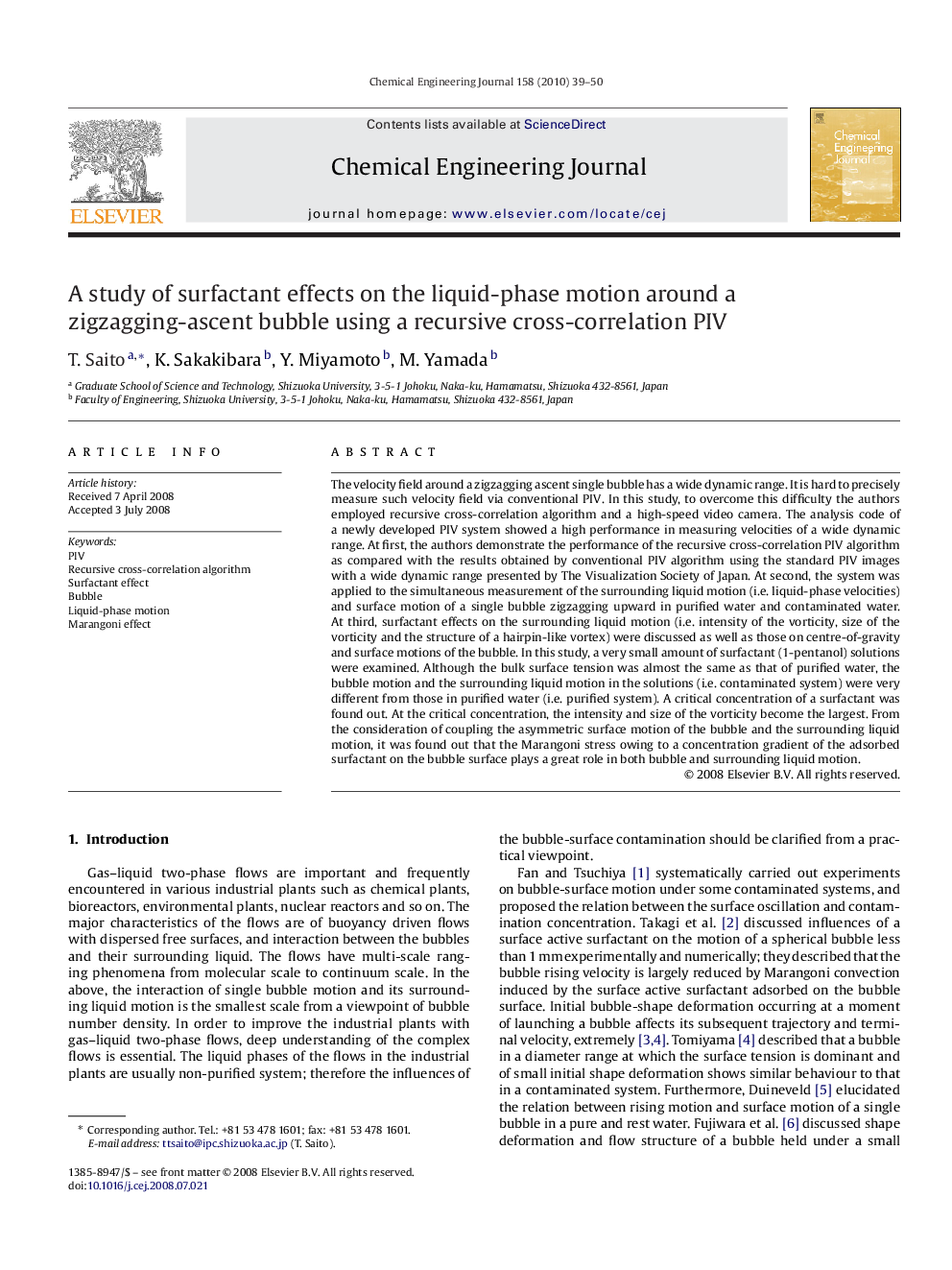| Article ID | Journal | Published Year | Pages | File Type |
|---|---|---|---|---|
| 152719 | Chemical Engineering Journal | 2010 | 12 Pages |
The velocity field around a zigzagging ascent single bubble has a wide dynamic range. It is hard to precisely measure such velocity field via conventional PIV. In this study, to overcome this difficulty the authors employed recursive cross-correlation algorithm and a high-speed video camera. The analysis code of a newly developed PIV system showed a high performance in measuring velocities of a wide dynamic range. At first, the authors demonstrate the performance of the recursive cross-correlation PIV algorithm as compared with the results obtained by conventional PIV algorithm using the standard PIV images with a wide dynamic range presented by The Visualization Society of Japan. At second, the system was applied to the simultaneous measurement of the surrounding liquid motion (i.e. liquid-phase velocities) and surface motion of a single bubble zigzagging upward in purified water and contaminated water. At third, surfactant effects on the surrounding liquid motion (i.e. intensity of the vorticity, size of the vorticity and the structure of a hairpin-like vortex) were discussed as well as those on centre-of-gravity and surface motions of the bubble. In this study, a very small amount of surfactant (1-pentanol) solutions were examined. Although the bulk surface tension was almost the same as that of purified water, the bubble motion and the surrounding liquid motion in the solutions (i.e. contaminated system) were very different from those in purified water (i.e. purified system). A critical concentration of a surfactant was found out. At the critical concentration, the intensity and size of the vorticity become the largest. From the consideration of coupling the asymmetric surface motion of the bubble and the surrounding liquid motion, it was found out that the Marangoni stress owing to a concentration gradient of the adsorbed surfactant on the bubble surface plays a great role in both bubble and surrounding liquid motion.
